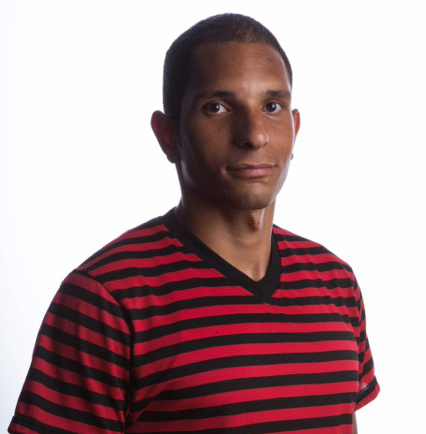Jason Perz, who is a relatively new Commodity Trading Advisor (CTA) with Camshaft Capital, uses TT for trade execution. When Jason was preparing to launch his CTA and looking for a trading platform, he found TT’s robust collection of functionality to be a perfect match for his requirements. Not only does TT incorporate all of the trading tools he needs, but Jason says they’re superior to the other offerings he evaluated. Jason, whose passions include riding BMX bikes professionally, public speaking, and learning all about the ups and downs of both the markets and life, is a great example of how to start from scratch and succeed. We sat down with Jason to learn more about him and his business. You can find him on Twitter at @JasonBoyd138.

Jason, what’s your background, and what led to your career as a Commodity Trading Advisor?
Jason: As a person, I have seen very low lows and high highs. I think being a professional bike rider helped me as a trader. The first thing you need is grit. Never giving up. If you stop, you can not get any better. Then you need to be ok with failure. You are going to fall, but can you get back up? Then you need to be obsessive. You need to understand that there is no such thing as perfection. You need to continue to strive to be better day after day. In BMX you will fall, there is no such thing as doing something new and unique without trying and failing. Just like in trading, you will always have a losing trade. Risk to reward is the name of the game. You have to learn how to heal quickly and move on in both professions. On the other side, there is no such thing as perfection in either profession either. I could win a contest and always think about something I could have done better.
As a trader, I think that you go through a journey. You try this, that and the other thing. Most of those things are wrong. I found trend following through desperation and became systematic for the same reason. I looked at my systematic trading against my discretionary trading, and I figured out that the systems I was building were trouncing my discretionary returns. Futures became my instrument of choice because they are the place to trade global products and commodities, which added diversification as I grew. Most of my filters use intermarket analysis signals, which assist me in trading grains, bonds, currencies and crypto by systematizing how these interact with each other. I know my lane well, and that lane is the macro market. I’m not a stock picker.
What type of trader are you, and what kind of strategies do you employ?
Jason: I refer to my trading style as conditional systematic. Conditional (from Larry Williams) because I like to get the probabilities on my side. I use intermarket analysis, seasonals (as a roadmap and not for entries or exits), macro fundamentals and Commitment of Traders (COT) data. I figured out ways of systematizing these to help create my roadmap. Nothing is perfect, but in the land of the blind, the one-eyed man is king. Traders can get a higher win rate on any system with a conditional overlay, but they also have to be careful not to filter themselves out of too many trades.
Do you have any mentors in the industry, and can you share how they’ve assisted you in starting your career?
Jason: My uncle was one of the first people that helped me understand cycles. He had a very long-term time horizon. He always made the hard, unpopular trade, and he had great returns. He was autistic, which is crucial because it showed me the personality you needed to become a good trader. You will swim against the herd constantly, even as a trend follower. Nothing changes sentiment like price.
Another mentor was Edmond Bugos, who helped me by explaining how the economy works. Larry Williams has been a significant influence. Mish Schneider was the mentor who called me out on my mistakes. She was the trader who I saw and thought, “She gets it.” She has vision, discipline and grit. I also rely heavily on books where I can immerse myself with the author. I did that with my BMX riding, where I visualized myself riding with the bikers on TV.
What attracted you to the TT platform, and how has your experience getting up and running with TT?
Jason: When you look at other professional platforms, they are lacking things. Maybe they have a good order type system, but they are lacking something else. I searched around for years trying to find a platform that was robust and had everything that you need to execute a trading system right off of the charts. Most of all, I look for a simple and intuitive system. In the trading platform world, there are not many of those. For my style of trading, the charts have to have everything I need, and the charts on TT are ideal.
TT’s marketing videos caught my attention and convinced me that TT was the first platform to do it all when it comes to futures. Great charts, solid platform, tons of order-entry tools. I learn something helpful about TT every day. When we had the opportunity to use TT at Camshaft Capital, I jumped on board!
Are there any particular markets that have your eye right now?
Jason: I am looking for a bottom in energy and most of the commodity-driven markets. Most of the time the market runs to safe havens as we come out of the best six months (Nov-April), and then most of the time we end up selling those safe havens in the fall. I think we will see bonds top as well as the dollar. I think the reflation trade will take off again as we get into late September or October. The flows look right for it and that’s what the system says, even as this view is unpopular right now.
Running the managed futures portfolio for the fund, I look to capture the major trends each quarter and each year. What makes us unique is that our system helps us find these major outlier events. We raise the probabilities of finding these outliers through my conditional framework. Everything is connected. By watching where money is flowing, we can figure out where we want to be positioned, and these are where the major winners come from. The way we outperform the market is to constantly move into assets that are outperforming no matter where you are in the cycle.
